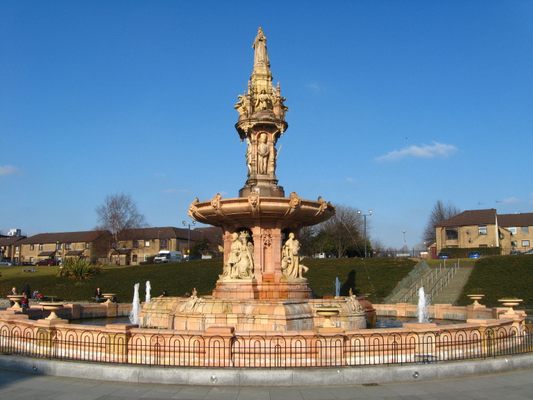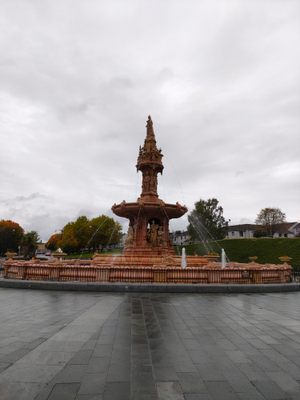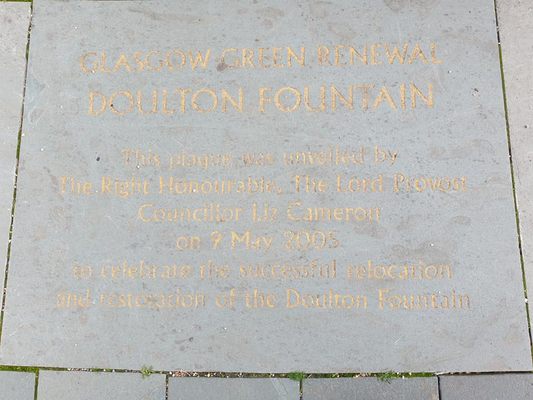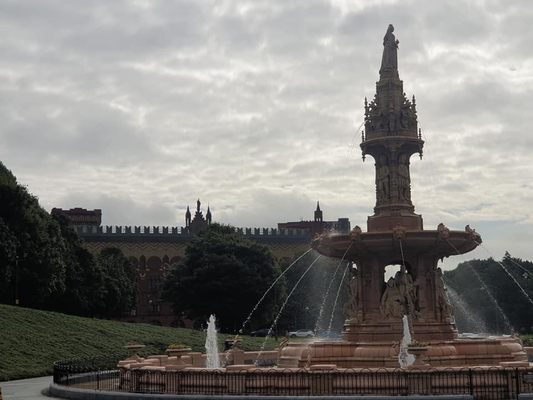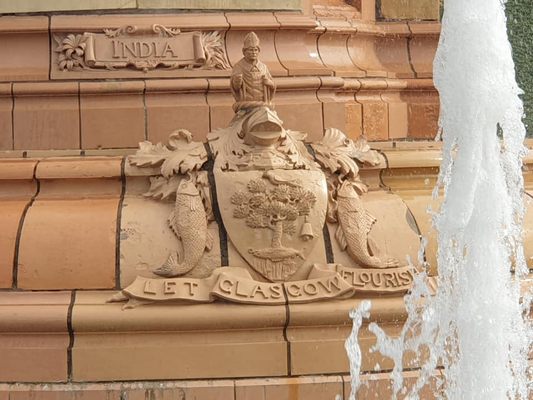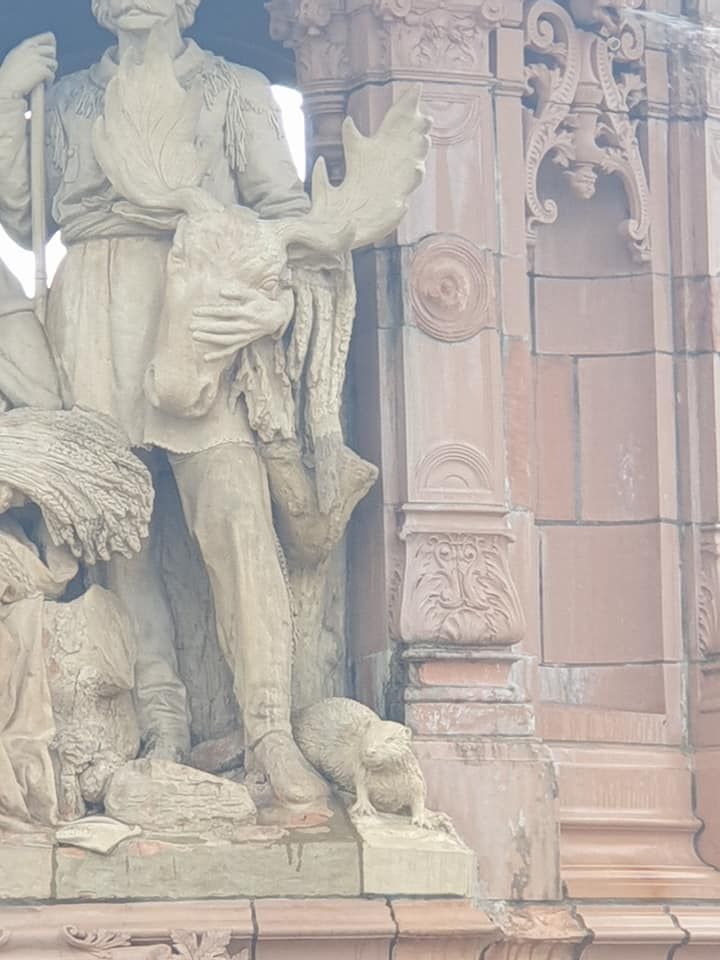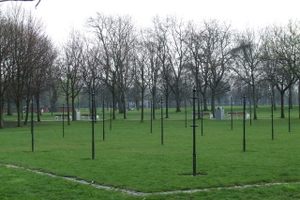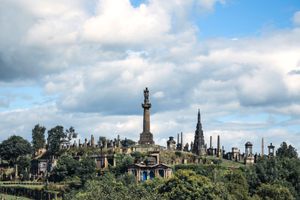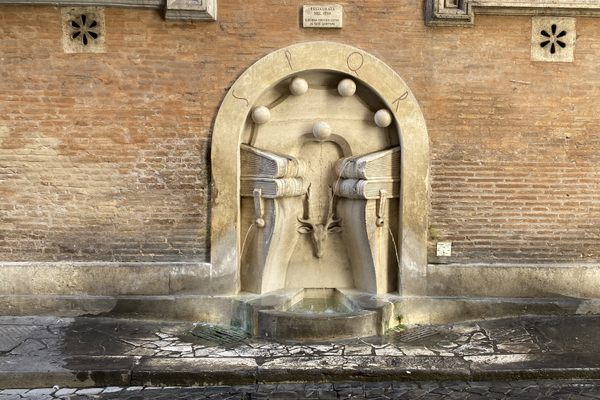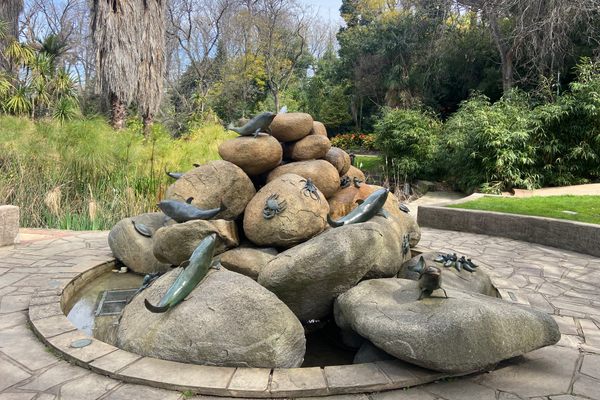About
As the centerpiece of a grand international event, the Doulton Fountain was designed to impress— a showcase of Victorian Britain’s achievements in science, art, and industry.
The fountain became one of the most popular attractions at the International Exhibition, which ran from May to November 1888 and attracted around six million visitors. Glasgow at the time was the British Empire’s second city. The exhibition was designed to rival the famous exhibitions which had previously been held in London. The fountain was a focal point of the event and commemorates the Golden Jubilee of Queen Victoria in 1887.
Depicted in the design of the fountain are Britain’s four former colonies: Australia, Canada, India, and South Africa. Four sentries, one on each side, represent the regiments of Scotland, England, Ireland, and the Royal Navy.
The design of the fountain by artist Arthur Edward Pearce was influenced by the ornate French Renaissance style. The statue was built by the Royal Doulton Company, a renowned English company that has produced tableware, ornaments, and stoneware since the early 1800s.
The fountain was first erected in Glasgow’s Kelvingrove Park for the 1888 International Exhibition. Then in 1890, the whole fountain was transported two and a half miles to a new location on Glasgow Green. It was then moved for a second time in 2004 to outside the front entrance of the People’s Palace.
The highly decorative fountain is made out of red terracotta bricks built around an iron framework. Terracotta was chosen because it could be worked with quickly and the detailed sculptures were easily created. It is also a durable material and weather-resistant, though it is susceptible to frost damage.
The Doulton Fountain is the largest fountain ever constructed of terracotta. The fountain’s height from its base to the apex is 46 feet, and the base has a diameter of 70 feet.
A lightning strike damaged the queen Victoria sculpture at the top tier of the fountain. It was difficult to restore as the queen's statue molds had been broken. The queen is dressed as the empress of India in a lace dress, wearing the imperial crown and holding an orb and scepter.
A £2 million restoration was carried out in 2005 to original specifications.
Related Tags
Know Before You Go
The fountains are switched off during the winter months to prevent damage caused by cold weather.
Community Contributors
Added By
Published
July 30, 2021
